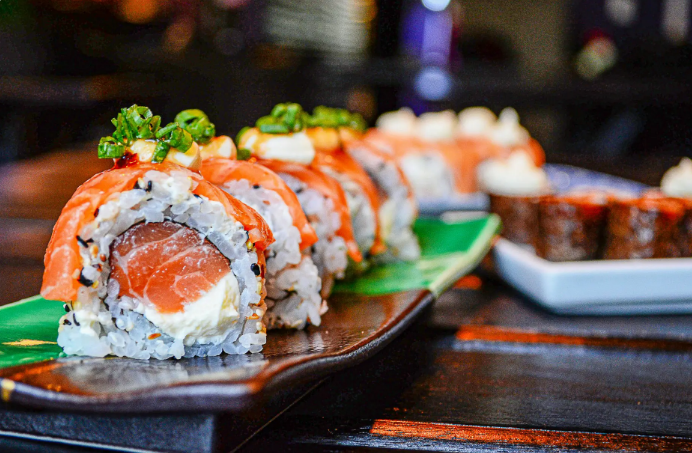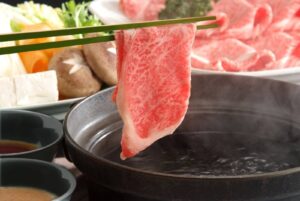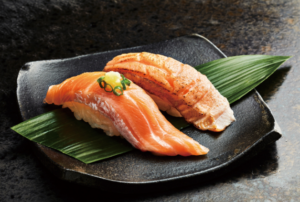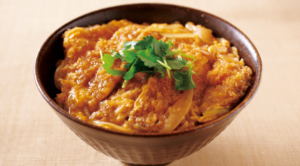In Indonesia, Japanese pop culture—manga, anime, J-POP, and street fashion—has gained immense popularity. In particular, Japanese food, often showcased in visually appealing ways in anime and manga, captivates audiences worldwide.
Sushi and ramen are the most popular Japanese dishes in Indonesia. With approximately 87% of the population identifying as Muslim, the country adheres to strict halal dietary laws, making pork-based dishes a no-go. As a result, Japanese dishes featuring chicken and beef have become favorites among Indonesians.
Subscribe to our newsletter for the latest trends in Japanese cuisine popular in Indonesia and Southeast Asia!
Click here to subscribe
Fusion Sushi and Spicy Ramen: Indonesian Favorites
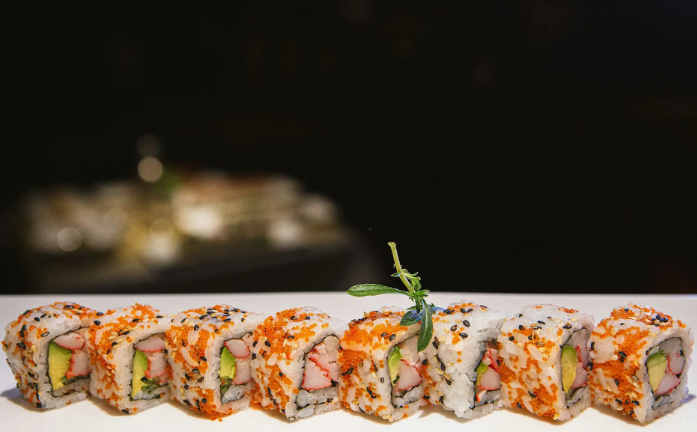
“Fusion cuisine” refers to a blend of ingredients, cooking styles, and traditions from various countries. Fusion sushi, for instance, reimagines traditional Japanese sushi to suit local palates, replacing raw fish and seaweed with familiar and widely accepted ingredients.
A classic example of fusion sushi is the California roll, which is popular worldwide and a favorite in Indonesia. Initially created in the United States, its early versions featured nori (seaweed) on the outside, which American diners were not fond of. This led to the creation of the “inside-out” style we know today, with rice on the outside and ingredients like avocado, imitation crab, and cucumber inside.
In Indonesia, sushi continues to evolve with local touches. Fusion sushi often includes sweet sauces, generous helpings of sambal (chili sauce), and vegetables, creating flavors that resonate with Indonesian palates. These adaptations often serve as a gateway to more traditional forms of sushi, leading Indonesians to appreciate them over time.
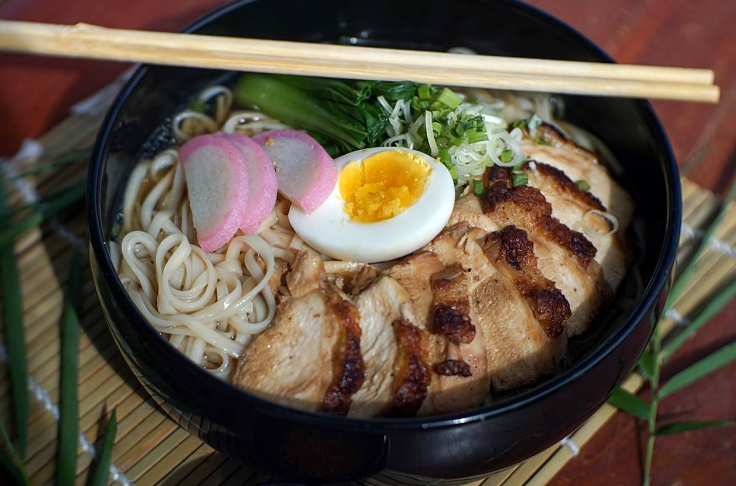
Similarly, spicy ramen has gained a massive following in Indonesia, where instant noodles (e.g., IndoMie) are a national staple, consumed at a rate second only to China globally. However, since most Japanese ramen uses pork-based broth, halal adaptations have become essential in Indonesia. Popular alternatives include chicken or seafood-based ramen and beef bone broth variants.
Halal Japanese Curry and Yakitori
Japanese curry, another beloved dish, has also found its way into Indonesian hearts. Unlike the thin, spicy curries native to Indonesia, Japanese curry features a thick, rich sauce served with rice and hearty ingredients like carrots, potatoes, and onions. CoCo Ichibanya, Japan’s largest curry chain, opened its first store in Indonesia in 2013 to cater to the growing demand.
Yakitori, often likened to Indonesia’s satay, is another popular choice. While satay is typically served with peanut-based sauces, yakitori features a simpler flavor profile that pairs well with sambal, making it a hit among Indonesians. Its adherence to halal guidelines ensures that it’s a preferred option for Muslim diners.
Opportunities and Challenges for Japanese Food Businesses in Indonesia
Indonesia’s capital, Jakarta, already boasts a wide array of Japanese chain restaurants, including Yoshinoya, Marugame Udon, Gindaco, and Ootoya. The market is competitive, with niche offerings like ochazuke and innovative adaptations of traditional Japanese dishes.
For those planning to enter the Indonesian market, offering lesser-known Japanese dishes like omurice, gratin, or Genghis Khan could carve out a unique niche. Alternatively, creative fusion dishes—such as rendang-inspired rice bowls or yakitori with local twists—could help differentiate your business.
Sushi Machines: The Future of Japanese Cuisine in Indonesia
Many Japanese dishes served internationally are now crafted with the help of advanced machinery rather than handmade by chefs.
Suzumo Machinery Co., Ltd. is a manufacturer of food processing machinery with the top share of the “sushi robot” market in Japan., They developed the world’s first sushi-making machine in 1981, and successfully developed Sushi Machines and a variety of food processing machinery, including omusubi forming machines.
For instance, Suzumo’s Rice Ball Robot can produce 3,000, 3,600, 4,200, 4,800 rice balls per hour by choice, with customizable size and texture. This speed and precision meet the growing demand for sushi in Indonesia, where traditional sushi-making methods requiring years of training are impractical.
Explore Japanese Cuisine and Technology at FOOMA JAPAN 2025
If you’re curious about the machines behind Japanese cuisine, why not see them in action? FOOMA JAPAN 2025, the world’s largest comprehensive food manufacturing exhibition, will be held from June 10–13, 2025, at Tokyo Big Sight.
Hosted by the Japan Food Machinery Manufacturers’ Association, FOOMA JAPAN has been showcasing food manufacturing solutions since 1978. In 2024, the event attracted 113,777 visitors, including 5,541 international attendees.
Promotional Video
FOOMA JAPAN 2024 Digest Videos(Day 1)
